Lenovo Yoga Book 9i review: Dual-screen a godsend for multitasking and work on spreadsheets
Sign up now: Get ST's newsletters delivered to your inbox
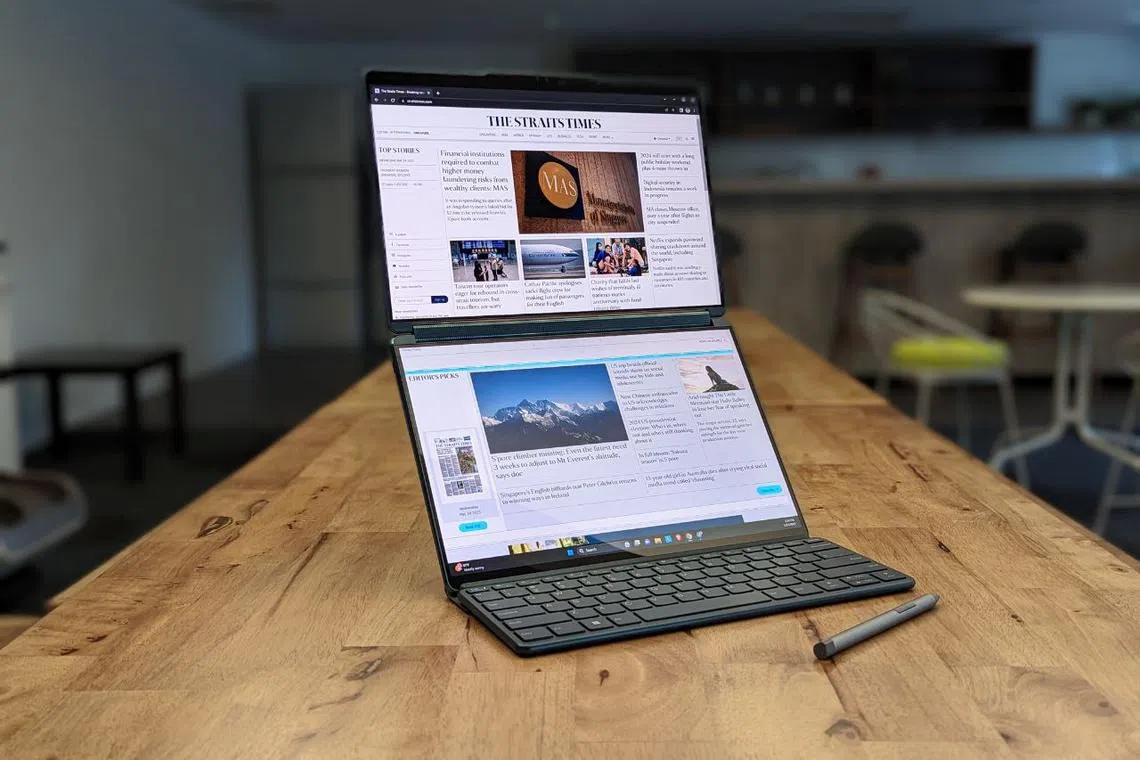
The Lenovo Yoga Book 9i is a hybrid laptop that comes with two screens, making it ideal for multitasking.
ST PHOTO: OSMOND CHIA
Follow topic:
SINGAPORE - If you often find yourself squinting at your laptop screen, Lenovo could have the fix you need with the help of its new dual-screen laptop.
The Lenovo Yoga Book 9i, which hits shelves on Tuesday, combines a pair of 13.3-inch touchscreens to form a laptop, giving users an extra screen to refer to as they work – or play.
This innovative approach to laptop design gives users many configurations to tinker with. Apps can be enlarged to occupy each screen or split up for multitasking. Spreadsheets or text also be sprawled across both screens for a newspaper-like reading experience that is unlike any other laptop in the market.
But you will have to get used to improvising, because the Windows operating system remains unoptimised for touchscreens.
Priced at an eye-watering $3,699, the Yoga Book 9i is the electronics manufacturer’s latest innovation under its Yoga Book series – devices that bring together elements of a laptop and a tablet like a touchscreen, digital pen and tactile keyboard.
In my two weeks with the Yoga Book 9i, I found at least seven ways to set up the device, which comes with an origami-inspired stand that helps to prop up the laptop in various positions.
You can use it like a normal laptop, sitting perpendicularly on a surface. An eight-finger tap will summon a virtual keyboard and mousepad at the bottom of the screen, which responds to every touch with a gentle vibration to mimic the pushing of keys.
The device’s haptics provide a satisfying vibration, but I kept missing keys due to the lack of tactile buttons to guide my fingertips. Sometimes, the bottom screen was unable to recognise my fingertips from my palms as I rested my hands on the surface to type, causing the cursor to go haywire. I can only imagine this being even trickier for users with sweaty palms.
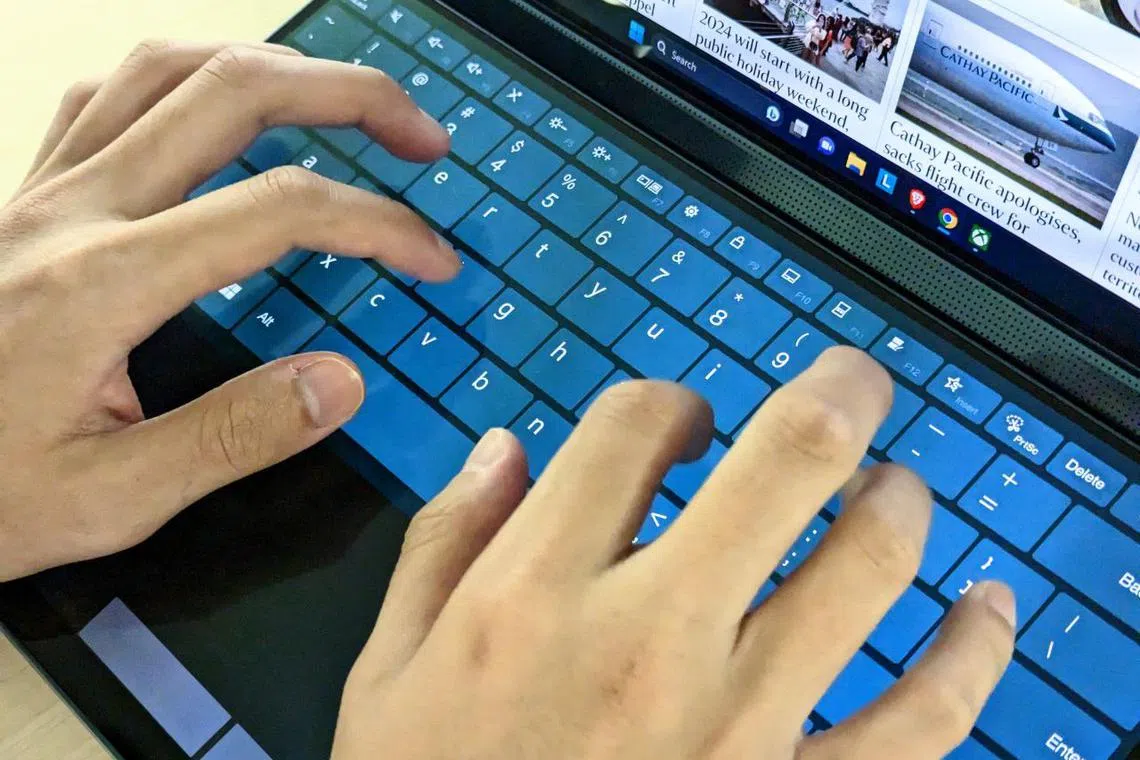
Users can summon a virtual keyboard to type on the bottom screen to use the Lenovo Yoga Book 9i like a standard laptop.
ST PHOTO: OSMOND CHIA
Thankfully, I rarely had to use the virtual keyboard thanks to a magnetic keyboard provided that can be attached snugly to the bottom panel to be used like a traditional laptop.
You can slide the keyboard upwards, exposing part of the touchscreen, which converts itself into a mousepad. The keyboard can also be shifted downwards, which seamlessly prompts the exposed portion of the screen to display your e-mails, the news, or windows that you drag in.
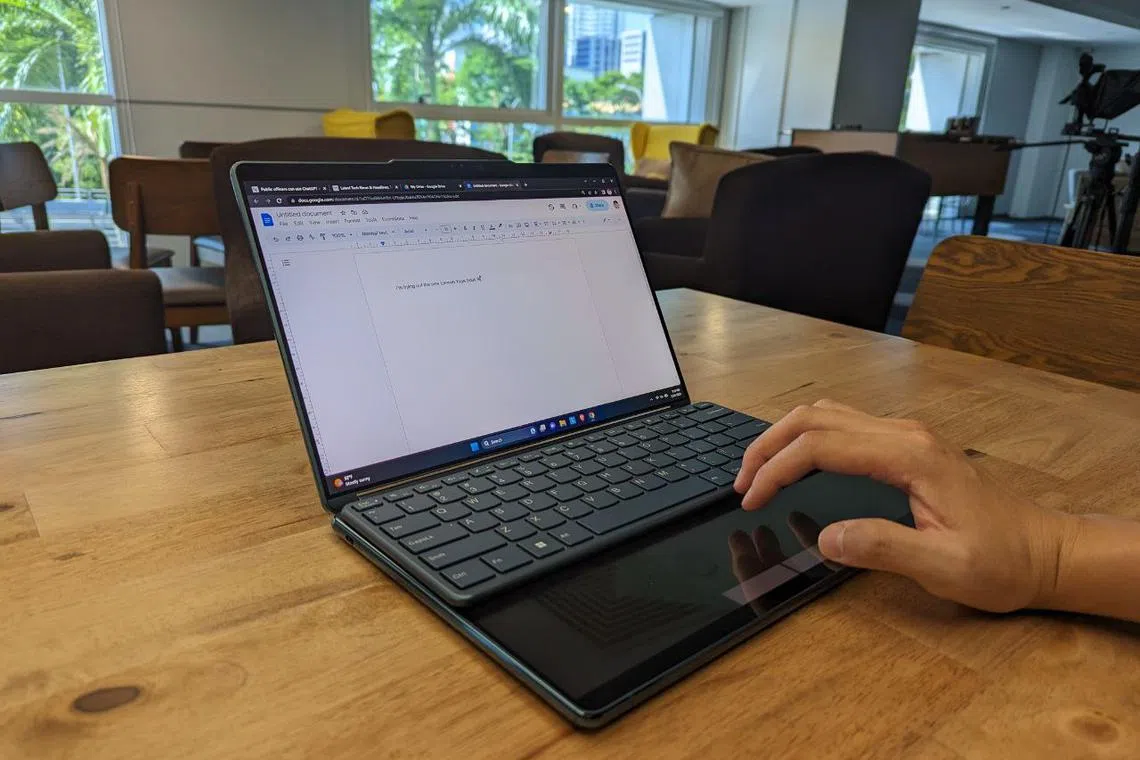
The Lenovo Yoga Book 9i comes with a magnetic keyboard that attaches to the bottom screen.
ST PHOTO: OSMOND CHIA
The Yoga Book 9i is at its most useful when propped up on its stand. You can stand both screens side by side, or stacked top and bottom to create an ultra-tall monitor that is sure to turn heads in the office or a cafe.
With Google Docs on my left and my references displayed in full screen on the right, it was a joy to write on the Yoga Book 9i as I didn’t have to constantly switch between tabs.

The Lenovo Yoga Book 9i can be propped vertically or on its side to make full use of its two Oled screens.
ST PHOTO: OSMOND CHIA
Lenovo has also put thought into making multitasking accessible with quick presets to split windows into sections across each screen.
While it takes some getting used to, touchscreen gestures like a quick swipe of a window to open it fully on the other screen make navigating the dual screens much easier.
The Yoga Book 9i has another neat trick up its sleeve called “waterfall” mode, which extends a window across both screens as long as they are stacked top and bottom.
Reports and densely packed spreadsheets glide across both screens, making them easy to read without having to squint or constantly scroll to search for information buried in walls of text.
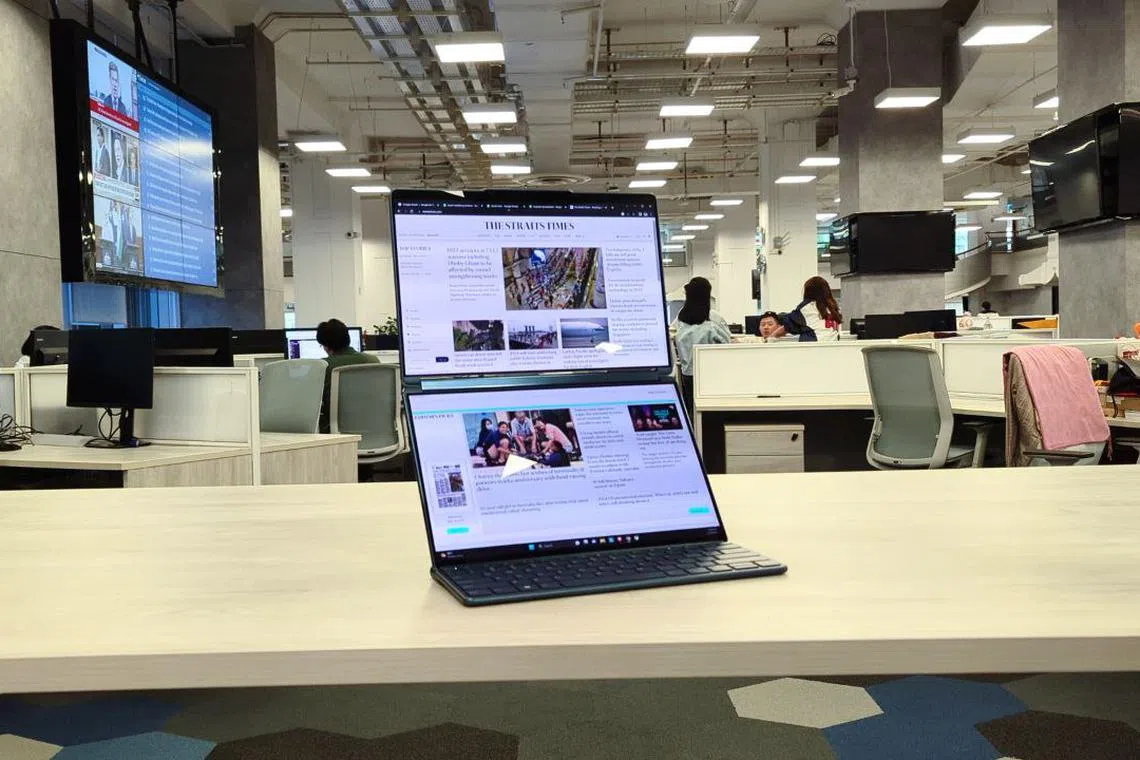
In “waterfall” mode, walls of text can be displayed seamlessly across both screens.
ST PHOTO: OSMOND CHIA
Don’t expect all apps to work smoothly, however, and some improvisation is required to multitask well. The most common obstacle I encountered was with Gmail, which doesn’t resize well when shrunken for multitasking. E-mails are often cut off, requiring me to scroll sideways or enlarge the window to unveil longer sentences.
Gmail was simply unusable when the window was split into quarters as its side menu could not be minimised to make room for the text.
Lenovo says the Yoga Book 9i is aimed at content creators and tech-savvy users, and it is clear the device is geared towards productivity. It boots up in 10 seconds, and comes with a handy pen that can be used as a cursor or to take quick notes.
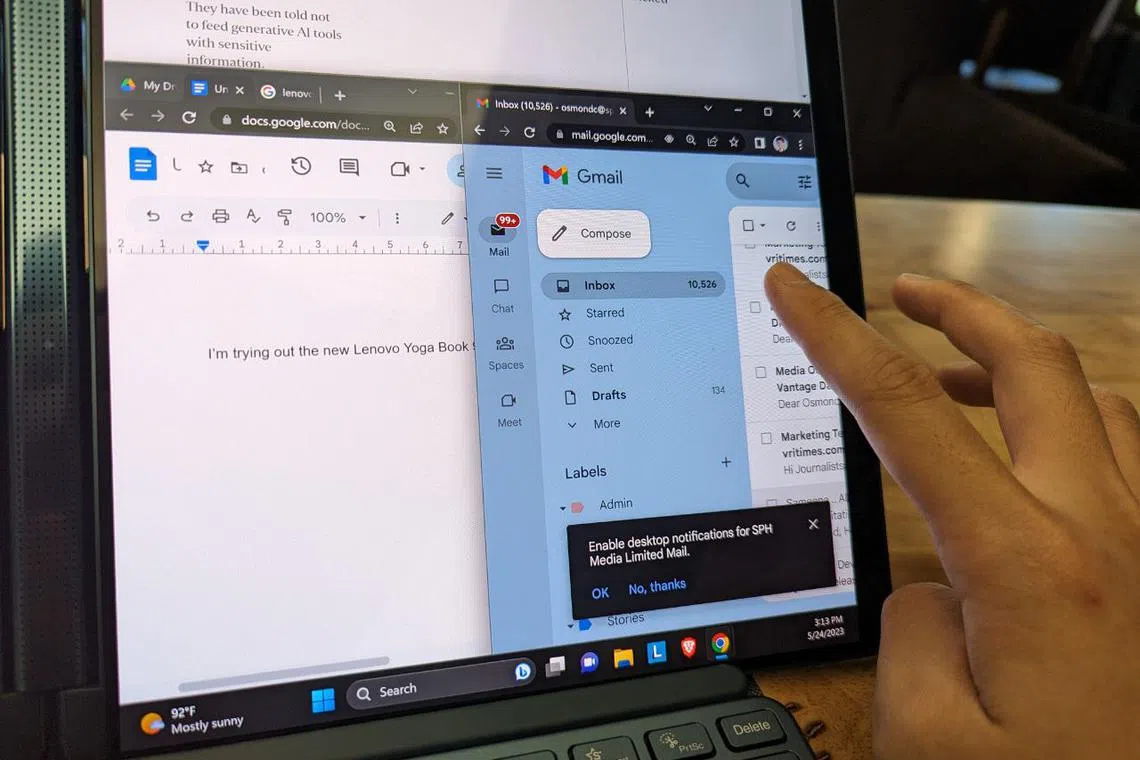
Not all apps size appropriately when shrunken for multitasking.
ST PHOTO: OSMOND CHIA
Powered by a capable Intel Core i7-1355U chip with 16GB of RAM, it never lagged once even as I opened dozens of websites to refer to during work.
Don’t forget the charger though, as the laptop eats through its battery. I managed roughly four hours of screen time during relatively heavy use before needing to juice up the Yoga Book.
Lenovo’s first dual-screen device is polished and well thought out where pioneers like the Microsoft Surface Duo have struggled, but how good it is really depends on the apps you intend to run on it. Given it is unlike most devices on the market, I highly recommend you test it in stores first before buying, even as pre-orders are now open.
At almost $3,700, the Yoga Book 9i is priced in high-end MacBook territory, except it cannot match the MacBook’s power or battery life.
But if small text and the lack of screen real estate has been your long-time nemesis when it comes to laptops, a second screen could be the answer to your woes.

